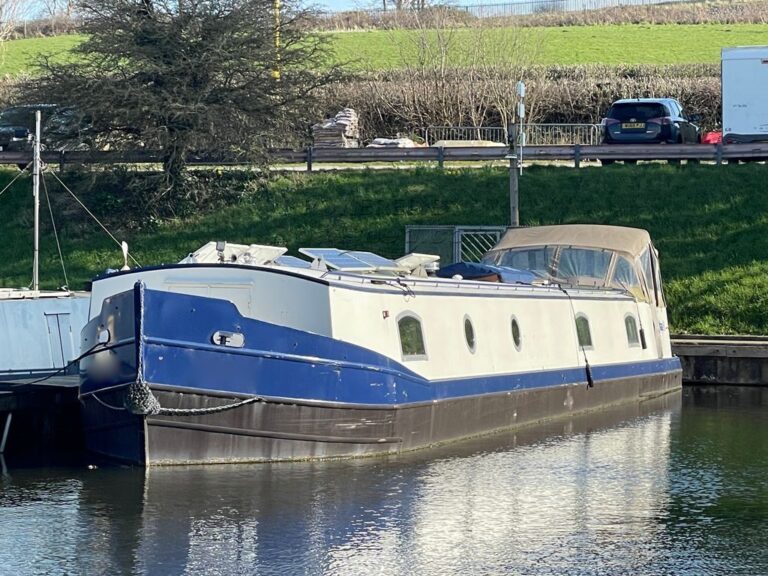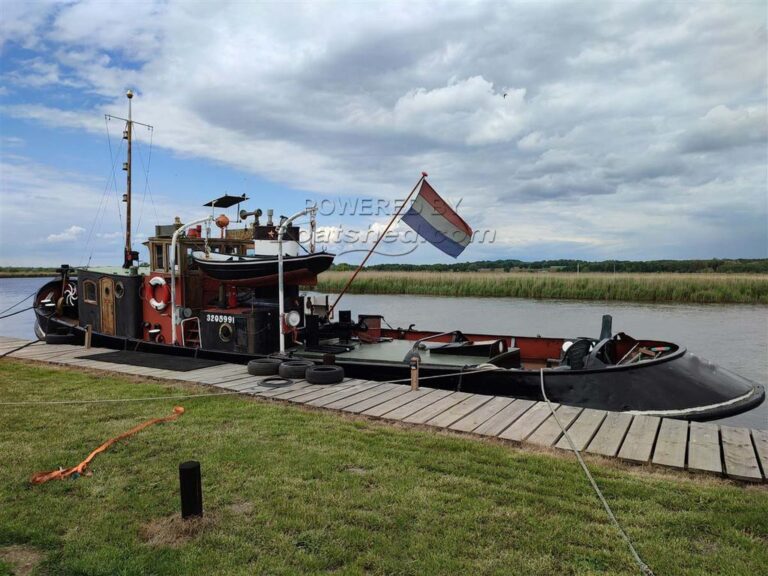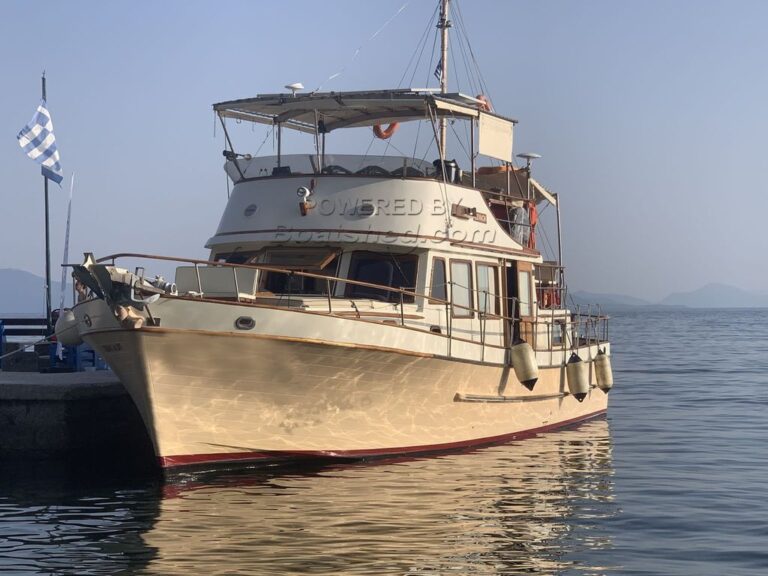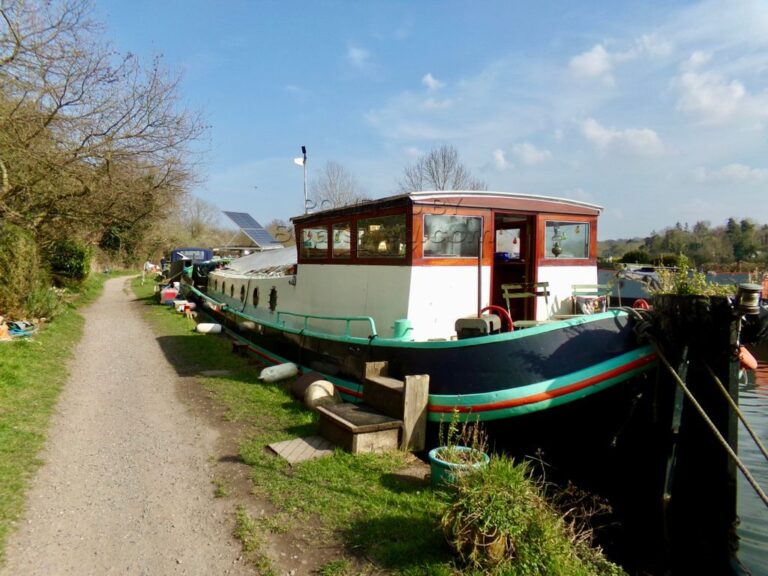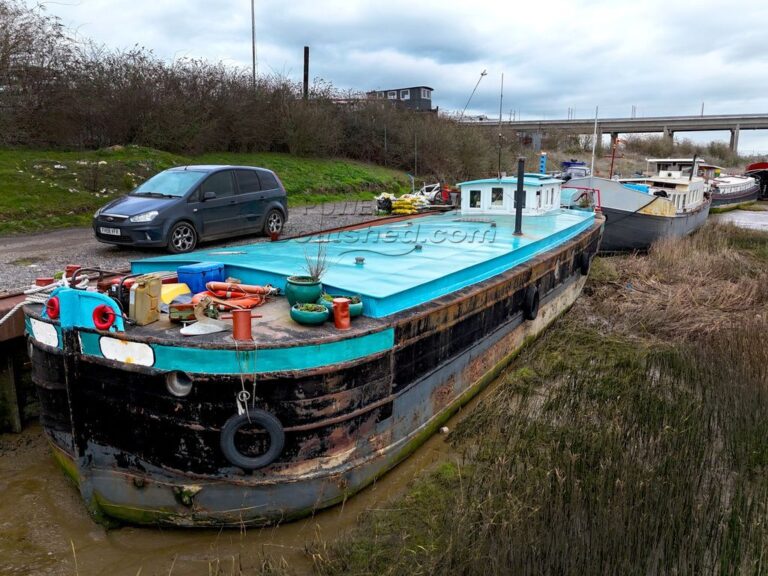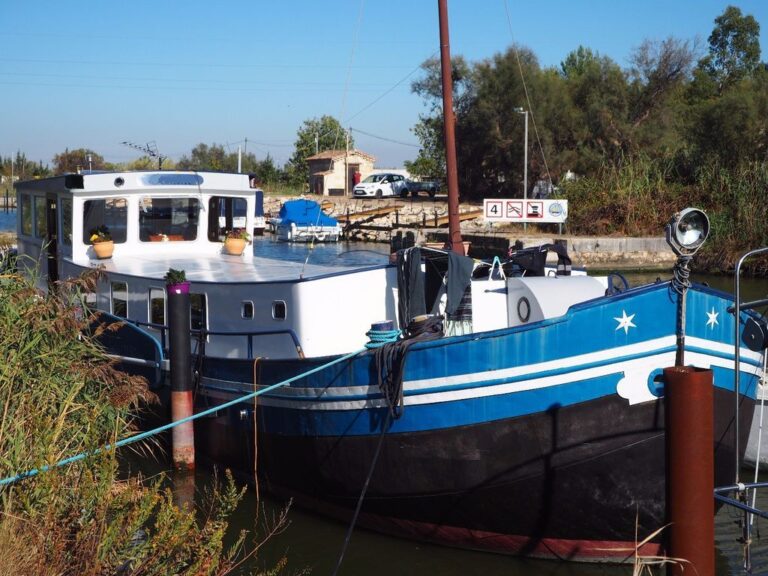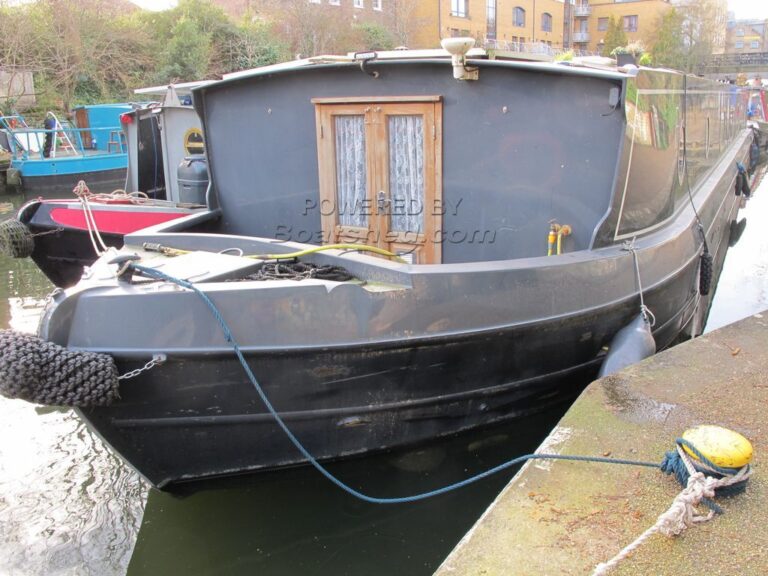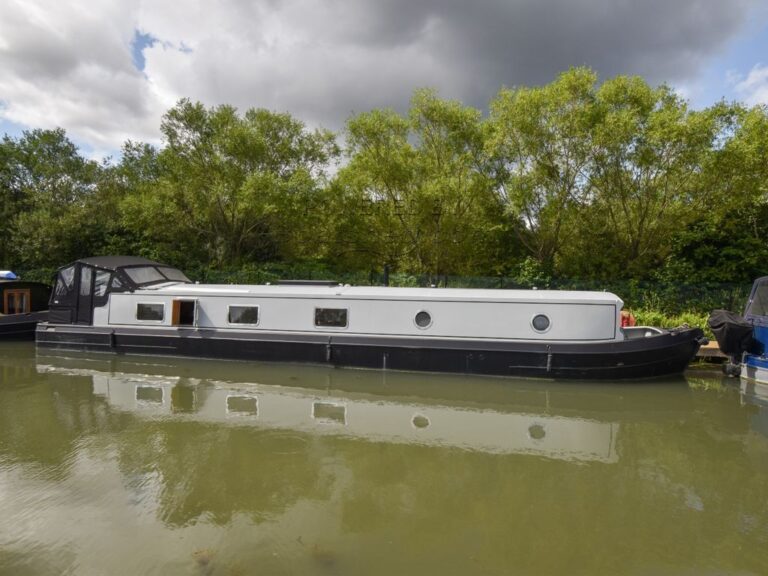Are you a hobbyist boat owner navigating the seas of maintenance confusion? Dive into this comprehensive guide tailored for small to medium boat owners, and discover the key differences between equipping and maintaining a vessel for racing versus cruising.
Welcome aboard to the captivating world of boat maintenance—a labour of love that transcends the boundaries of both racing and cruising. In this comprehensive guide titled “Boat Maintenance 101: Essential Tips for Keeping Your Vessel Shipshape,” we delve into the art and science of caring for your boat, tailored specifically for hobbyist sailors navigating the waters of small to medium-sized vessels. Embark with us as we explore the divergent goals and distinct requirements of racing versus cruising, uncovering the nuances of maintenance cycles geared for performance and leisure alike.
In the exhilarating realm of racing, where victory hinges upon speed, agility, and endurance, we’ll navigate through the rigorous regimens of yearly or bi-yearly sail replacements, frequent inspections, and the meticulous care of high-performance gear. Conversely, for the cruising enthusiast, the focus shifts towards durability, reliability, and long-term investments in comfort. We’ll navigate through the tranquil waters of extended maintenance intervals, emphasizing the importance of durable sails, reliable navigation equipment, and comfortable amenities for extended journeys.
But amidst the thrill of the racecourse and the serenity of the open sea lies a common thread: the importance of routine inspections, basic repairs, and knowing when to seek professional help. From pre-departure checks to post-voyage walk-arounds, we’ll chart a course through the essential tasks and skills necessary to keep your vessel seaworthy and shipshape. Join us as we embark on this voyage of discovery, where every wave brings new challenges, and every knot tied is a testament to the enduring bond between sailor and sea.
Understanding Your Boat’s Purpose
Ah, the age-old debate between the realms of racing and cruising – two distinct yet equally captivating pursuits upon the open waters. To embark upon this discussion is to delve into the very essence of sailing itself, where each course chosen dictates the very nature of one’s nautical journey.
In the realm of cruising, the seafarer seeks solace in the tranquillity of the voyage, prioritizing comfort and convenience above all else. Here, the discerning sailor may opt for furling sails and simplified rigging, designed to streamline the sailing process and minimize the demands upon the crew. With every setting of the sun, the cruising enthusiast relishes in the ease with which their vessel glides across the waves, each adjustment made with the effortless grace of a seasoned mariner. For them, the goal is not solely to conquer the wind and waves but to embrace the serenity of the sea.
Conversely, the domain of racing beckons those with a thirst for speed and a penchant for precision. Here, the sailor’s gaze is fixed upon the horizon, each tack and jibe meticulously orchestrated in pursuit of victory. In this arena, the crew is but an extension of the vessel itself, working in harmony to harness every gust of wind and surge of current to propel their craft to new heights of performance. For the racing aficionado, the notion of labour-intensive sailing is not a burden but a badge of honour, a testament to their dedication to the pursuit of excellence upon the water. In this pursuit, sacrifices may be made in the name of speed – complexities in rigging, demanding manoeuvres, and the need for a skilled crew are embraced as necessary means to achieve the ultimate goal: triumph upon the racecourse.
The essence of performance upon the briny expanse – a topic that ignites the fervour of sailors of all persuasions. When we speak of performance expectations, we delve into the very heart of what drives the seafaring soul: the pursuit of speed, the quest for agility, and the measure of endurance.
For the cruiser, the notion of speed is but a gentle breeze upon the canvas of their journey. While a difference of half a knot may elicit little more than a passing glance, it is the steady rhythm of progress that defines their passage. With each knot gained, the cruiser finds solace in the steady cadence of their voyage, relishing in the unhurried pace at which they traverse the boundless sea.
Conversely, for the racer, every fraction of a knot is a jewel to be prized, a testament to the meticulous craft of their endeavour. In the crucible of competition, speed is not merely a luxury but a necessity – a means by which to outpace rivals and seize victory upon the waves. Here, the pursuit of performance knows no bounds, as sailors push themselves and their vessels to the very limits of capability in pursuit of that elusive edge. Agility becomes the watchword, as nimble manoeuvres and swift adjustments are made in the blink of an eye, each calculated to eke out precious seconds in the race for supremacy. And yet, it is not speed alone that defines the racing ethos, but the enduring endurance of both vessel and crew alike. In the crucible of competition, where every moment is a test of mettle, it is the resilience to endure that separates the champions from the chaff, as sailors press on through the trials of wind and wave in pursuit of glory upon the open sea.
As we navigate the realm of comfort and longevity upon the vast canvas of the sea, we are confronted with the delicate balance between durability and efficiency, between the comforts of home and the demands of the open water. For the cruiser, the vessel is not merely a means of transport but a sanctuary amidst the ever-changing tides, a haven to weather the storms of both nature and time. Here, the weight of the boat becomes a bulwark against the tempest, providing stability and reassurance in the face of choppy seas and shifting winds.
Conversely, for the racer, the pursuit of speed knows no compromise, as every ounce of excess weight becomes a burden upon the quest for victory. In the crucible of competition, where every second is a battleground, sailors spare no expense in their quest to shed unnecessary ballast and streamline their vessel for maximum efficiency. Here, the weight of the mast, the composition of the rigging – each decision is made with a singular focus on performance, as racers seek to harness the very essence of the wind itself in pursuit of glory upon the waves.
And yet, amidst the rigors of racing, there lies a certain poetry in the endurance of the cruiser, as they weave their way through the tapestry of time upon the open sea. For the cruiser, the journey is not a sprint but a marathon, a testament to the enduring resilience of both vessel and crew alike. Here, the choice of materials becomes a matter of longevity, as cruisers opt for durability over expedience, selecting rigging and components that will stand the test of time amidst the relentless onslaught of salt and spray. In this pursuit, the cruiser finds solace in the knowledge that their vessel is not merely a fleeting fancy but a steadfast companion upon the boundless horizon, a testament to the enduring spirit of the sea.
Maintenance Cycles: Racing vs. Cruising
For Racers
Ah, the relentless pursuit of perfection upon the racing circuit – a realm where every inch, every second is fiercely contested upon the altar of competition. In this crucible of speed and precision, the maintenance regimen of the serious racer is a testament to the unyielding dedication to performance excellence. For the racer, the sails are not merely canvas but the very essence of their propulsion, each gust of wind harnessed to propel them towards victory. Thus, it is no surprise that the discerning racer adheres to a rigorous schedule of sail replacement, likely replacing sails yearly or bi-yearly, ensuring that each sheet and halyard is imbued with the crisp efficiency of youth, year after year.
Indeed, the care and maintenance of a carbon mast, that stalwart pillar of racing prowess, demands a keen eye and a vigilant hand. While renowned for their strength and lightness, carbon masts are not immune to the relentless assault of UV radiation, that unseen foe lurking within the sun’s rays. Thus, it is recommended that the UV coating of a carbon mast be inspected at regular intervals, with experts advising a thorough examination every 5 years.
In the world of competitive sailing, where victory often hangs upon the slightest advantage, the condition of a carbon mast’s UV coating can mean the difference between triumph and defeat. UV exposure, that silent assailant of materials, can gradually degrade the protective layer that shields the mast from harm, leaving it vulnerable to the ravages of the elements. As such, a thorough inspection of the UV coating becomes not merely a matter of maintenance but a crucial component of a racer’s quest for excellence upon the open sea.
And yet, amidst the relentless demands of the racing circuit, there lies a certain poetry in the meticulous care and attention lavished upon every winch and sheet. For the racer, the quest for victory begins long before the starting gun sounds, as each component is scrutinized and tested with the unyielding eye of a master craftsman. From the whirr of the winch to the snap of the sheet, every motion is honed to perfection, every adjustment made with the precision of a surgeon’s scalpel. In this pursuit, the racer finds solace in the knowledge that their vessel is not merely a machine but an extension of themselves, a testament to the indomitable spirit of human ingenuity upon the boundless expanse of the sea.
The meticulous maintenance schedule of a racer extends beyond the sails and rigging, encompassing every aspect of the vessel’s operation. Electric winches, while perhaps not a common sight on a racing yacht, still demand careful attention and servicing to ensure optimal performance. Often, these winches are subjected to rigorous inspection before every regatta, with any signs of wear or malfunction addressed with the utmost urgency. Furthermore, the condition of sheets and halyards serves as a barometer of the vessel’s readiness for competition – in the world of racing, the mantra “condition over age” reigns supreme, with frequent replacements dictated by use rather than time alone. Typically, sheets and halyards should be replaced every 3 to 5 years to maintain peak performance and reliability on the racecourse.

For Cruisers
In the serene world of cruising, where the horizon stretches endlessly and the passage of time seems to slow to a gentle crawl, the maintenance ethos takes on a different hue – one characterized by consistency and reliability. Unlike the relentless pace of racing, where every moment is a battle against the clock, cruisers embrace a more measured approach to maintenance, one that emphasizes longevity and steadfastness over speed and agility.
For the cruiser, the aluminium mast stands as a testament to the enduring resilience of materials, a stalwart guardian against the whims of wind and wave. While corrosion may lurk as a silent menace, diligent maintenance can stave off its advances, ensuring that the mast remains a steadfast beacon upon the open sea. With regular servicing recommended on a yearly basis, the aluminium mast boasts a lifespan that spans generations, with well-maintained specimens often enduring for upwards of 50 years – a testament to the enduring spirit of craftsmanship upon the water.
In the realm of cruising, where the passage of time is measured not in seconds but in sunsets, the sails serve as silent sentinels, their weathered canvas bearing witness to countless voyages upon the open sea. While in the world of racing, a worn-out sail may spell disaster, in cruising, it is often viewed as a badge of honour, a testament to the countless miles traversed and the adventures shared. With basic woven polymer sails considered “worn out” after roughly 2500 hours of use, it is not uncommon to see sails that have weathered a decade or more of nautical trials, their faded hues echoing the passage of time upon the boundless expanse of the ocean.
Hulls and Engines
In the delicate dance between speed and endurance, the care and maintenance of a vessel’s engine and hull become paramount, each component a vital cog in the intricate machinery of nautical performance. For both racer and cruiser alike, the annual ritual of hull maintenance serves as a cornerstone of seaworthiness, ensuring that the vessel remains fleet of foot and steadfast in the face of the elements. It is recommended that boats emerge from the depths on a yearly basis, their hulls scrubbed clean of marine encrustations, fresh layers of anti-foul applied, and new anodes installed to ward off the insidious advances of electrolytic corrosion. While cruisers may content themselves with this annual pilgrimage to dry land, racers, ever mindful of the pursuit of speed, may opt for a more frequent regimen, scrubbing and reapplying anti-foul before each regatta in pursuit of that elusive edge upon the waves.
Amidst the cacophony of racing sails and the gentle lapping of the sea against the hull, the engine stands as a silent sentinel, its steady heartbeat the lifeblood of the vessel’s journey upon the open water. In the world of boating, where every moment is a testament to the delicate balance between speed and endurance, the annual service of the engine becomes a sacred rite, a ritual of maintenance and care that ensures the vessel remains steadfast in its course. For inboard engines, the service can often be performed afloat, a testament to the ingenuity of modern engineering, whilst outboards and outdrives must be tenderly lifted from the embrace of the waves, their mechanical hearts laid bare for inspection and adjustment.
In the eternal struggle between the forces of nature and the indomitable spirit of human ingenuity, the care and maintenance of a vessel’s engine and hull stand as a testament to the enduring bond between sailor and sea. Whether racing for the finish line or cruising into the sunset, the delicate balance between speed and endurance, longevity and durability, remains the guiding star that lights the path upon the boundless expanse of the ocean. And so, as the waves swell and the winds shift, the sailor’s hand remains steady upon the helm, ever vigilant in their quest for mastery upon the open water.
Equipment Essentials
Racing Gear
In the world of racing, where every fraction of a knot counts and victory hangs upon the delicate balance of speed and precision, the choice of gear becomes a matter of paramount importance. At the heart of the racing vessel stands the carbon mast, a testament to the relentless pursuit of performance excellence. Lightweight yet impossibly strong, the carbon mast serves as the backbone of the racing rig, its towering presence a beacon of speed upon the open water. Paired with high-performance sails meticulously crafted to harness every whisper of wind, the racing rig becomes a symphony of power and grace, each adjustment of the rigging a subtle dance with the elements to squeeze every last ounce of speed from the vessel’s canvas.
In the pursuit of victory upon the racecourse, every aspect of the racing vessel is finely tuned to perfection, from the rigging to the hardware that adorns its sleek deck. For the discerning racer, the rigging is not merely a means of hoisting sails but a tool to shape and control the very essence of wind itself. With rigging set up to effectively change the shape of sails on the fly, the racing vessel becomes a marvel of engineering precision, its sails billowing and flexing in perfect harmony with the shifting winds. And yet, amidst the pursuit of speed, the racer must make sacrifices in the name of efficiency – a barebones deck, stripped of all but the essentials, may offer less in the way of comfort but ensures minimal maintenance and maximum performance upon the waves.
In the unforgiving crucible of competition, where victory hangs upon the razor’s edge, the racing vessel stands as a testament to the indomitable spirit of human ingenuity upon the open water. With carbon masts soaring to the heavens and high-performance sails unfurling in their wake, the racing rig becomes a symphony of speed and precision, each component meticulously crafted to harness the very essence of the wind itself. In this pursuit of perfection, where every moment is a battle against the clock, the racing gear serves as both sword and shield, guiding the vessel to triumph upon the boundless expanse of the sea.
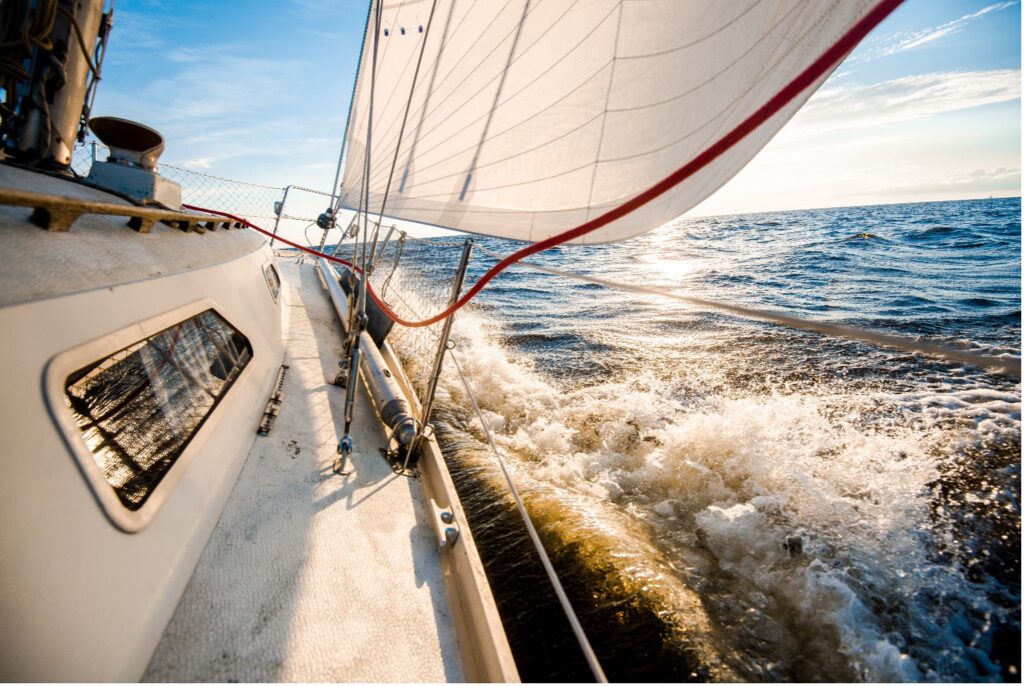
Cruising Comforts
In the tranquil world of cruising, where the journey is as important as the destination, the emphasis shifts from speed to comfort, from performance to leisure. For the cruiser, every aspect of the vessel is meticulously tailored to provide a haven of relaxation amidst the boundless expanse of the ocean. Durable sails, crafted to withstand the rigors of countless voyages, billow gently in the breeze, their sturdy canvas a testament to the enduring spirit of the sea. Unlike their racing counterparts, cruisers eschew the barebones deck in favour of creature comforts, with plush cushions adorning every corner, inviting weary sailors to rest and recharge beneath the sun-drenched sky.
In the pursuit of cruising comfort, reliability becomes paramount, from the navigation equipment that guides the vessel’s course to the amenities that transform the cabin into a home away from home. For the discerning cruiser, reliable navigation equipment is not merely a luxury but a necessity, ensuring safe passage through the ever-shifting currents and hidden hazards that lurk beneath the waves. With dependable chart plotters and GPS systems at their disposal, cruisers navigate the seas with confidence, their trusty instruments guiding them to distant shores and undiscovered horizons.
And yet, amidst the pursuit of leisure upon the open water, the cruiser does not shy away from the conveniences that make life at sea a delight. Electric winches whirr to life at the touch of a button, effortlessly hoisting sails and trimming lines with the precision of a seasoned mariner. Furling sails unfurl with ease, their seamless operation a testament to the ingenuity of modern engineering. And as the sun reaches its zenith and the heat of the day bears down upon the cockpit, cruisers seek refuge beneath the shade of a Bimini top, its canvas canopy providing respite from the relentless glare. And what better way to savour the serenity of life at sea than with a barbecue sizzling on deck, the savoury aroma of grilled fare mingling with the salty tang of the ocean breeze, a feast fit for a sailor king upon the boundless expanse of the sea.
Safety First
In the realm of sailing, where the vast expanse of the ocean holds both the promise of adventure and the spectre of danger, safety reigns supreme as the paramount concern for sailors of all stripes. Whether racing for glory or cruising for leisure, the sailor’s code dictates that safety must always take precedence above all else. This ethos is exemplified by organizations like the Royal Ocean Racing Club, whose guidelines for boat setup and required equipment serve as a beacon of wisdom for sailors of every persuasion. From guard rails to strops designed to clip into during the darkness of night or the fury of rough weather, from ample crew life jackets to the indispensable EPIRB and man overboard buoys, these guidelines offer a comprehensive roadmap to safety that transcends the boundaries between racing and cruising.
For both racer and cruiser alike, safety is not merely a checklist to be completed but a mindset to be embraced, a constant vigilance that informs every decision made upon the open water. Guard rails provide a sturdy barrier against the ever-present threat of a sudden lurch or unexpected wave, while strops offer a lifeline in the darkness, ensuring that sailors remain securely tethered to the vessel even in the most treacherous of conditions. Ample crew life jackets stand as silent sentinels, their presence a reassuring reminder that, in the event of disaster, help is never far away.
And yet, amidst the pursuit of speed or the leisurely journey, safety remains the common thread that binds sailors together upon the boundless expanse of the sea. From the racing circuit to the distant reaches of the cruising grounds, from the thrill of competition to the tranquillity of a sunset sail, the sailor’s creed is unwavering: safety first, last, and always. And so, as the sails billow and the waves dance beneath the keel, the sailor’s hand remains steady upon the helm, ever vigilant in their quest to conquer the elements and return safely to port once more.
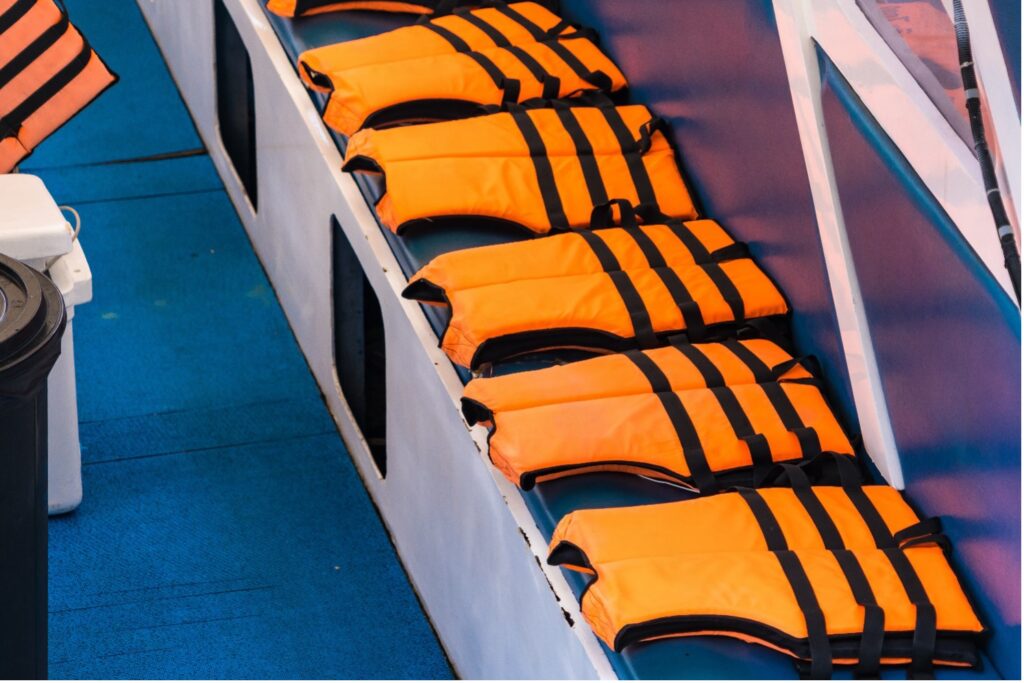
Budgeting and Planning
Racing Budgets
In the high-stakes world of racing, where victory hangs upon the finest of margins and every second counts, the pursuit of excellence comes with a price tag to match. For the serious competitor, the initial investment in a racing yacht is but the tip of the iceberg, the first step on a journey that demands ongoing financial commitment and unwavering dedication. While the cost of entry may vary depending on the class and calibre of competition, a rule of thumb often cited is to allocate approximately 10% of the boat’s value annually towards the upkeep and optimization necessary to remain competitive.
This ongoing investment is not merely a matter of luxury but a necessity in the pursuit of victory upon the racecourse. From high-performance sails crafted from cutting-edge materials to state-of-the-art rigging designed to harness the very essence of the wind itself, every aspect of the racing yacht must be meticulously tuned and maintained to extract maximum performance from the vessel. And yet, the financial outlay extends beyond mere hardware to encompass the human element as well – from training regimens and coaching fees to entry fees for regattas and races, the costs associated with maintaining a competitive edge can quickly add up.
And yet, amidst the financial demands of racing, there lies a certain poetry in the pursuit of perfection upon the open water. For the passionate sailor, the investment in a racing yacht is not merely a financial transaction but a commitment to a way of life, a testament to the enduring spirit of human ingenuity and the relentless pursuit of excellence. And so, as the sails unfurl and the bow cuts through the waves, the racer’s heart beats with the thrill of competition, knowing that every dollar spent is an investment in the pursuit of victory upon the boundless expanse of the sea.
Cruising Costs
In the serene world of cruising, where the journey is as much about the destination as it is about the voyage itself, the financial landscape takes on a different hue. Unlike the high-octane realm of racing, where every dollar spent is an investment in speed and performance, the cruiser’s priorities lie in long-term investments that prioritize comfort and reliability above all else. With fewer sail replacements and a focus on durability over speed, the rule of thumb often cited is to allocate approximately 5% of the boat’s value annually as cost of ownership.
This long-term investment approach reflects the cruiser’s commitment to a lifestyle characterized by leisurely exploration and unhurried passage-making. From durable sails designed to withstand the rigors of countless voyages to reliable navigation equipment that guides the vessel’s course with unwavering precision, every aspect of the cruising yacht is meticulously tailored to ensure maximum comfort and safety on the open water. And yet, amidst the tranquillity of the cruising grounds, the cruiser remains ever vigilant, knowing that diligent maintenance and prudent investment are the keys to a lifetime of nautical adventures.
For the passionate cruiser, the investment in a seaworthy vessel is not merely a financial transaction but a commitment to a way of life – a testament to the enduring allure of the sea and the timeless beauty of exploration. And so, as the sun sets upon the horizon and the stars emerge to illuminate the night sky, the cruiser’s heart is filled with a sense of contentment, knowing that every dollar spent is an investment in the pursuit of joy and fulfilment upon the boundless expanse of the ocean.
Finding the Balance
In the ever-evolving world of boating, where the horizon stretches endlessly and the possibilities are as vast as the open sea itself, the art of budgeting becomes a delicate dance between aspiration and pragmatism. Whether one’s heart beats for the thrill of racing or the tranquillity of cruising, tailoring one’s budget to align with their boating goals is essential to unlocking the full potential of the nautical journey.
For the cruiser with a taste for adventure, the allure of the racing circuit may beckon after a recent refit, offering a tantalizing opportunity to test their mettle against the best in the business. Yet, mindful of their long-term cruising ambitions, they may opt to forgo the expense of a new suit of sails, instead choosing to allocate their budget towards the comforts of life at sea. In doing so, they strike a delicate balance between the pursuit of speed and the embrace of leisure, ensuring that every dollar spent brings them one step closer to their ultimate boating goals.
Conversely, for the racer accustomed to the adrenaline-fueled rush of competition, the decision to take a season off may seem counterintuitive – and yet, it may be precisely what is needed to recalibrate their budget and realign their priorities. Freed from the relentless demands of the racecourse, they may choose to invest in the luxuries of comfort before embarking on deliveries or long passages, ensuring that both vessel and crew are fully prepared for the challenges that lie ahead. In doing so, they reaffirm their commitment to the boating lifestyle, ever mindful of the delicate balance between ambition and financial prudence upon the open water.
Tips for DIY Maintenance
Routine Inspections
In the realm of maritime maintenance, routine inspections stand as the cornerstone of responsible seamanship, serving as the first line of defence against the unseen perils that lurk beneath the surface. From the moment a sailor sets foot aboard their vessel to the moment they return to shore, a careful regimen of inspections ensures that issues are spotted and addressed before they have the chance to escalate. For the seasoned sailor, these inspections are not merely a matter of habit but a sacred duty, a solemn vow to safeguard both vessel and crew against the ever-present dangers of the open water.
Before every sail, the diligent sailor conducts a series of pre-departure inspections designed to ensure that the vessel is in optimal condition for the journey ahead. From engine checks to generator checks, battery checks to a thorough examination of the navigation equipment, no detail is too small to escape scrutiny. Each inspection serves as a vital checkpoint in the sailor’s quest for safety and security upon the open sea, ensuring that potential issues are identified and addressed before they have the chance to compromise the voyage.
Upon returning ashore, the sailor’s work is far from over, as a comprehensive walk-around inspection awaits to assess the vessel’s condition after its time at sea. Cleaning winches, checking sails for signs of wear and tear, and conducting cursory inspections of sheets and halyards are all part of the meticulous process of caring for a boat. With each inspection, the sailor reaffirms their commitment to responsible stewardship, knowing that by spotting and addressing issues early, they can ensure the continued seaworthiness of their vessel and the safety of all who sail aboard her.
Basic Repairs
In the world of boating, self-sufficiency is not just a virtue but a necessity, as the tasks while at sea. While the yearly refit may address the larger issues, day-to-day maintenance often falls squarely on the shoulders of the sailor themselves. Fortunately, there exists a wealth of resources and guides to assist in these endeavours, offering step-by-step instructions for tasks ranging from the routine to the more complex.
From stripping and cleaning winches to inspecting masts and rigging for signs of corrosion, the sailor must be adept at identifying and addressing potential issues before they have the chance to escalate. With the proper tools and techniques at their disposal, even the most daunting of tasks can be tackled with confidence and precision. Whether replacing lines such as sheets and halyards or checking the accuracy of the compass, the sailor’s toolkit becomes their lifeline, enabling them to navigate the challenges of maintenance with ease and efficiency.
And yet, amidst the myriad tasks that demand attention, there are those less glamorous but no less essential duties that must be attended to – such as cleaning and maintaining the heads. As any seasoned sailor will attest, a blockage in the heads while at sea is a scenario best avoided at all costs. Thus, the sailor must be prepared to roll up their sleeves and tackle even the less sanitary tasks with diligence and determination, knowing that by doing so, they ensure the continued safety and comfort of all who sail aboard their vessel.

Knowing When to Seek Professional Help
In the intricate dance of maritime maintenance, there comes a time when even the most skilled sailor must acknowledge the limits of their expertise and defer to the wisdom of the professionals. While self-sufficiency is indeed a noble pursuit, there are certain tasks and scenarios that demand a level of skill and knowledge beyond the capabilities of the average sailor. Knowing when to seek professional help is not a sign of weakness but a testament to prudent seamanship and a commitment to the safety and integrity of the vessel.
When faced with issues such as a mysterious knocking in the engine or errors displayed by navigation equipment, it is imperative to recognize the gravity of the situation and act accordingly. While it may be tempting to attempt to diagnose and address these issues independently, doing so risks exacerbating the problem and potentially compromising the safety of the vessel and its crew. In such instances, it is wise to enlist the services of skilled professionals who possess the knowledge and expertise to diagnose and rectify the issue with precision and efficiency.
Certain components of a vessel, such as in-mast furlers, are notorious for their finicky nature and require a delicate touch to maintain and repair. Should inspections reveal any issues with these critical components, it is best to err on the side of caution and seek the assistance of experts who specialize in their care and maintenance. By doing so, the sailor demonstrates a keen understanding of their limitations and a willingness to prioritize the safety and seaworthiness of their vessel above all else.
Final Thoughts
In the vast and ever-changing world of boating, from the thrill of racing to the tranquillity of cruising, one constant remains: the importance of maintenance and care. Maintaining a boat is indeed a labour of love, a testament to the enduring bond between sailor and vessel. Whether you’re a seasoned racer or a leisurely cruiser, the health and well-being of your vessel are paramount to a safe and enjoyable journey upon the open water. By understanding the unique demands of your chosen pursuit and tailoring your maintenance regimen accordingly, you can ensure that your vessel remains shipshape and seaworthy for years to come.
From the meticulous maintenance schedules of the racing circuit to the leisurely inspections of the cruising grounds, each sailor must find their own balance between ambition and prudence, speed and comfort. By equipping yourself with the essential skills and tools necessary to tackle basic repairs and routine maintenance tasks, you empower yourself to navigate the challenges of the open water with confidence and grace. And when the limits of your expertise are reached, don’t hesitate to seek the assistance of skilled professionals who possess the knowledge and expertise to address issues with precision and efficiency.
In the end, whether you’re racing for the finish line or cruising into the sunset, the journey is as much about the voyage itself as it is about the destination. By prioritizing safety, reliability, and comfort, you can embark upon your nautical adventures with the peace of mind that comes from knowing that your vessel is in good hands. So hoist your sails, chart your course, and set forth upon the boundless expanse of the sea, for the journey awaits, and the possibilities are endless. And remember, maintaining a boat is a labour of love—a testament to the enduring bond between sailor and sea.
Ready to take your boat maintenance game to the next level? Share your experiences and tips in the comments below and join our community of boat enthusiasts committed to keeping their vessels shipshape. Email hello@sailors.project1031.com to be featured on our site.
References and Resources
- Boating for Beginners offers a detailed DIY Boat Maintenance Guide, covering essential maintenance tasks such as oil changes and saltwater exposure care.
- Discover Boating has a Beginner’s Guide to Boat Maintenance, highlighting seven basic maintenance tasks including battery and fuel system care, as well as propeller and propshaft checks.
- Another article from Discover Boating delves into general tips for maintaining your boat, discussing the importance of regular cleaning, lubrication, and the specifics of engine flushing.
- EZ Dock presents a comprehensive guide focusing on specific maintenance areas such as canvas, upholstery, woodwork care, and offers advice on properly storing your boat to protect it from weather-related damage.


